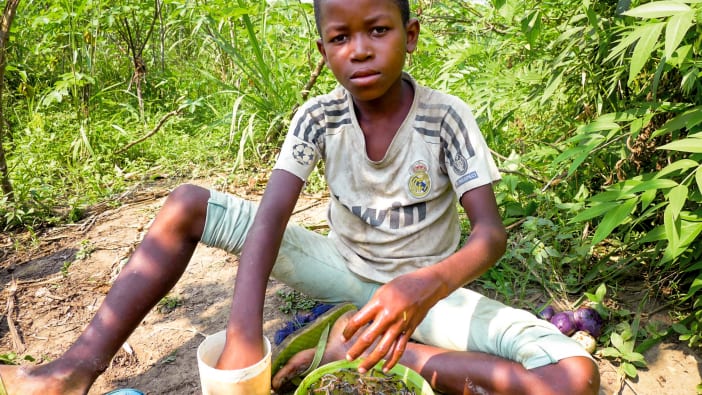Previous issues of Footsteps have mentioned the value of the moringa tree as a fast-growing tree for agroforestry, a good source of nutritious green leaves and beans and, in particular, the ability of moringa oil from the seeds to purify water. Researchers have now found another use for this tree. If the leaves are first dried (see drier on page 16) then powdered using a pestle and mortar, they can be stored in plastic bags or glass jars for several months.
The powdered leaves are high in vitamins, minerals and protein. Just one teaspoon contains all the vitamins and minerals required each day, together with much of the daily requirements of protein, iron and calcium. In Senegal, dried moringa leaves have been used with great success to combat malnutrition among children and babies. One teaspoon of the powder is added to their porridge or cereal three times a day. They rapidly regain their health and begin to put on weight. The powder has also been found to improve ulcers, eye problems and skin troubles.
For healthy families, it is recommended that a couple of teaspoons of the powder are added just before serving stews and sauces each day. This will help keep people healthy and ensure that children and old people are getting plenty of vitamins and minerals.
Be careful not to use more than these recommended amounts. Moringa leaves contain small quantities of oxalic acid and if too much is eaten, this could cause problems.
Information provided by Lowell Fuglie, Church World Service, BP 3822, Dakar, Senegal








